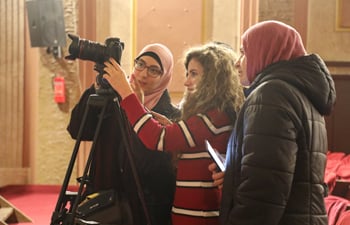Since the Club of Rome’s first report, we’ve known that a focus on endless growth presents a huge threat to the environment. Switching from fossil fuels to renewable energy, eating less meat, flying less, consuming less... We know what to do in general terms, but how do we actually achieve it? That’s the challenge.
All the possible solutions demand a lot from us as a society and as individuals. They have implications in terms of affordability, lifestyle, and how we design our living environment. Besides a technological transformation, there must be a social transformation: a change in behaviour, values and relationships.
We can only reshape society from the bottom up. The good news is, it’s already happening. DOEN receives funding applications almost every day from people working towards the necessary transitions, from community activists to social entrepreneurs. But there’s a need for speed. And reshaping society will require more than a global consensus on goals. We need realisable plans, and most of all, imagination. What will society look like in the future, and what will that mean for us collectively and as individuals?
Artists have a crucial role to play here. They spot, inspire, and visualise changes others still regard as impossible. The image of an artist sitting alone in an attic working on a piece for months on end is hugely outdated. Many contemporary artists are actively involved in creating a movement around societal issues such as climate change. Social practice is big in today’s art world, with artists and institutions embarking on projects triggered by changes in society. Taking a personal, open-minded, socially engaged approach, they look for ways to actively involve others in the development of their artistic practice. This new relationship between the maker, the audience and other stakeholders brings together a multitude of perspectives and creates a new view on the world.
An example of a successful socially engaged work is The Incredible Shrinking Man, a project in which artist Arne Hendriks investigated whether it might be desirable to shrink people so the world would need less food. He ran workshops, did research and set up a restaurant serving portions suitable for the new-sized humans. It attracted the attention of a major bank, where he subsequently worked on a project studying the relationship between abundance, economics and food, and a research institute, where he conducted an interdisciplinary research project aimed at tackling perceptions of growth.
In another work, a group of designers used an open platform to design the phone of the future as a way of drawing attention to conflict minerals and electronic waste. It led to the successful sustainable business Fairphone. And in the play De Zaak Shell, the theatre makers Anoek Nuyens and Rebekka de Wit show in an accessible way how the climate crisis is essentially a crisis of responsibility.
We desperately need artists’ analysis, imagination, and ability to convey their messages to a broader audience in order to shape society’s future. They have a critical role to play. Let’s give them the space they need and work with them to reshape society.
This column by Carol Gribnau was published in P+ magazine’s latest Marktboek collection.


